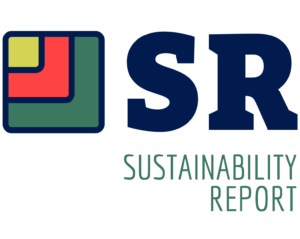Risk Management
RISK AND Compliance
Risk of business
Compliance risk management is the process of identifying, assessing and mitigating potential losses that may arise from an organization’s noncompliance with laws, regulations, standards, and both internal and external policies and procedures. Management practices are intended to help organizations maintain compliance with various regulations and laws.
Organizations may have compliance risk management policies and procedures, which are the framework and mechanisms they implement to control compliance risk.
Compliance risk management is a continuous process that involves tracking changes in the regulatory environment to ensure an organization’s compliance is up to date.
Compliance policies, procedures and training materials must be revisited on a regular basis in light of new policies, directives and regulations.
Organizations need to be aware of their compliance risk on a number of levels, not just from the perspective of the Chief Compliance Officer (CCO).
While the CCO and other compliance staff are responsible for reviewing all aspects of the organization’s compliance risk — including its legal, regulatory, financial and technical risks — the compliance risk extends to all levels of the organization, including information technology (IT). This is why the organization’s IT department must be involved in compliance risk management.
Compliance risk management forms a portion of the collective governance, risk and compliance (GRC) discipline.
GRC is a set of management practices and technologies designed to ensure that an organization is operating in a manner consistent with its values, mission and risk tolerance. GRC policies are mainly seen in the financial industry, but other industries, such as healthcare, are also required by law to adopt risk management and compliance practices.
GRC is designed to help organizations identify and evaluate risks to their business and reputation. The three fields are similar to incident management, operational risk assessment and internal auditing.

Management process
Risk management process
At the broadest level, risk management is a system of people, processes and technology that enables an organization to establish objectives in line with values and risks.
A successful risk assessment program must meet legal, contractual, internal, social and ethical goals, as well as monitor new technology-related regulations. By focusing attention on risk and committing the necessary resources to control and mitigate risk, a business will protect itself from uncertainty, reduce costs and increase the likelihood of business continuity and success.
Three important steps of the risk management process are risk identification, risk analysis and assessment, and risk mitigation and monitoring.
- Identifying risks
Risk identification is the process of identifying and assessing threats to an organization, its operations and its workforce. For example, risk identification may include assessing IT security threats such as malware and ransomware, accidents, natural disasters and other potentially harmful events that could disrupt business operations.
- Risk analysis and assessment
Risk analysis involves establishing the probability that a risk event might occur and the potential outcome of each event. Risk evaluation compares the magnitude of each risk and ranks them according to prominence and consequence.
- Risk mitigation and monitoring
Risk mitigation refers to the process of planning and developing methods and options to reduce threats to project objectives. A project team might implement risk mitigation strategies to identify, monitor and evaluate risks and consequences inherent to completing a specific project, such as new product creation. Risk mitigation also includes the actions put into place to deal with issues and effects of those issues regarding a project.
Risk management is a nonstop process that adapts and changes over time. Repeating and continually monitoring the processes can help assure maximum coverage of known and unknown risks.
Management and Compliance
Meet consumer demands
Nielsen studies show that 66% of consumers would spend more for a product if it came from a sustainable brand, and 81% of global consumers feel strongly that companies should help improve the environment.
There is a changing trend among consumers toward supporting sustainability, and it is only getting stronger as the number of millennials and generation Z increases.
Though sustainability is also about Social and Economic Aspects, Environmental concerns lead the thinking.
